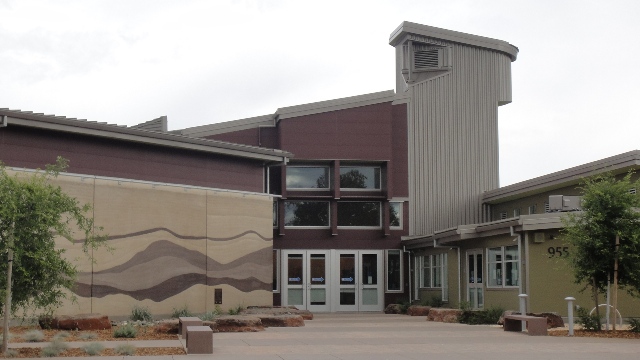Feb 25 2016
The energy used to create electricity to power lights, heating and air conditioning, and appliances within buildings causes nearly 50 percent of all fossil fuel emissions in the United States. Educating children about the importance of having environmentally friendly, or “green,” buildings could be a key factor in whether they grow to up to own and operate buildings that are green. Now, a researcher at the University of Missouri has found that students who attend school in buildings specifically designed to be “green” exhibit higher levels of knowledge about energy efficiency and environmentally friendly building practices.
 “Teaching green” buildings are specifically designed as a kind of museum for environmentally friendly building designs.
“Teaching green” buildings are specifically designed as a kind of museum for environmentally friendly building designs.
For her study, Laura Cole, an assistant professor of architectural studies in the MU College of Human Environmental Sciences, examined five middle schools from across the country. The schools were housed in buildings ranging from older, energy inefficient designs to new buildings architecturally designed as “teaching green” buildings.
“These ‘teaching green’ buildings are specifically designed as a kind of museum for environmentally friendly building designs,” Cole said. “The idea is that by being exposed to this innovative design every day at school, along with a sustainable school culture fostered by eductors, students will inherently learn and appreciate the importance of green buildings. This study found this idea to be true in that the students from the ‘teaching green’ schools had much higher levels of knowledge about environmentally friendly practices than students who attended school in more inefficient buildings. These students also had much higher levels of environmentally friendly behaviors while at school, such as recycling and turning off lights.”
“Teaching green” schools include a variety of design features to immerse students in an environmentally friendly atmosphere. These features can include open-air hallways, which greatly reduce heating and cooling costs; exposed beams and girders where students can see the materials required to erect such large structures; dedicated waste and recycling spaces that are easily accessible; and the use of recycled and repurposed construction materials. Cole says even if schools cannot afford to build expensive new “teaching green” buildings, other options are available to help teach their students by creating smaller interventions in the building or school yard.
“The study also showed that even a school with a relatively inefficient building design had students with a high level of green building literacy because the school had a very nice outdoor landscaped teaching space, including an outdoor classroom and a learning garden,” Cole said. “Anything educators can do to utilize existing space can help their students’ green building literacy. We all use buildings every day. Our children will soon be the people buying and constructing homes, offices and other buildings. Learning and translating that knowledge into future green building design will play a huge part in solving our environmental problems.”
This study was published in Children, Youth and Environments.
Source: http://www.missouri.edu/